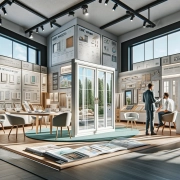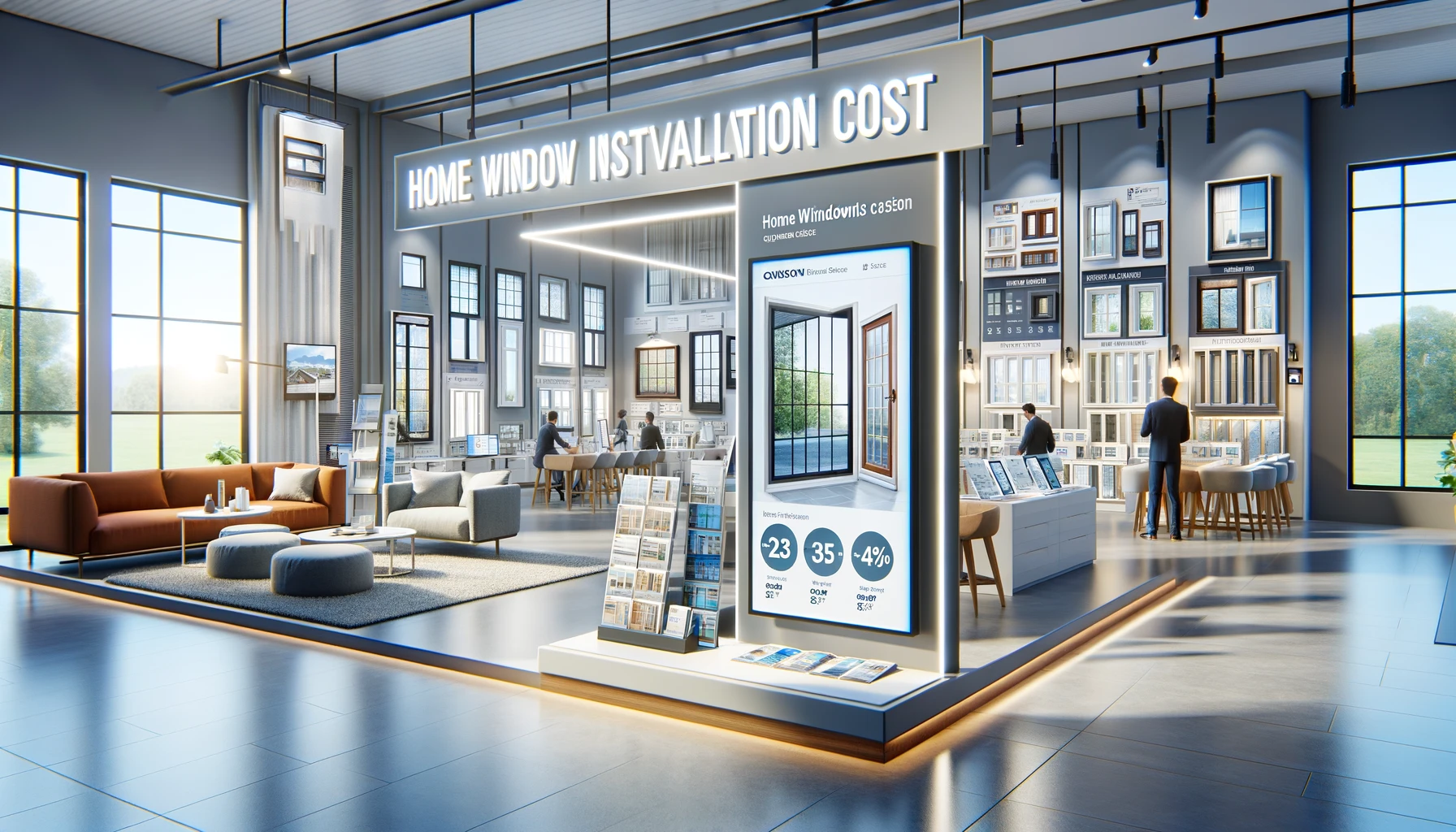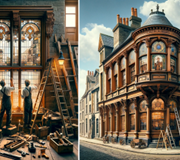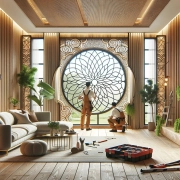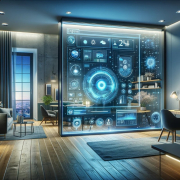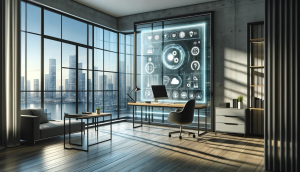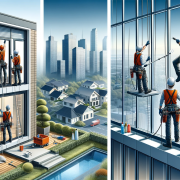Energy-Efficient Window Upgrade
Embarking on a journey to enhance your home’s energy efficiency can be both exciting and daunting, and one of the most impactful changes you can make is upgrading to energy-efficient windows. This transformation goes far beyond mere aesthetic enhancement; it’s an investment in reducing energy consumption, saving on bills, and contributing to a greener planet. In our comprehensive guide to energy-efficient window upgrades, we delve into the intricate details of different types of energy-efficient windows, their functionality, and the substantial benefits they bring to your home. From understanding the mechanics behind their energy-saving features to navigating through various styles and materials, this article provides a thorough exploration. We also dissect the window energy ratings, helping you to decode what they mean and how they can guide your decision-making process. This guide is designed to equip you with all the necessary information, ensuring your window upgrade is not only a smart choice for today but a sustainable investment for the future.

The Mechanics of Energy-Efficient Windows
The Role of Glazing
The heart of an energy-efficient window is its glazing. Double-glazed windows have two layers of glass with a space between them, usually filled with air or an inert gas, which acts as an insulator. Triple-glazing adds another layer, offering even better insulation.
Frame Materials
The frame material also plays a critical role in a window’s energy efficiency. uPVC, wood, and aluminium are the most common materials. Each has different insulating properties, with wood and uPVC generally being more efficient than aluminium, although advancements in aluminium technology are closing this gap.
Additional Features
Other features contributing to energy efficiency include low-E (low emissivity) coatings, which reflect infrared light, keeping heat inside in the winter and outside in the summer. Some windows also have inert gases like argon or krypton between the panes for better thermal efficiency.
Types of Energy-Efficient Windows
Double-Glazed Windows
Double-glazed windows are the standard in energy efficiency, striking a balance between cost and performance. They are an excellent starting point for anyone looking to upgrade from single-glazed windows.
Triple-Glazed Windows
For those in colder climates or seeking to maximise their home’s energy efficiency, triple-glazed windows offer an additional layer of insulation. While more expensive, they provide superior energy savings in the long run.
Specialised Glazing Options
Options like tinted glazing, which reduces solar heat gain, or acoustic glazing, which also offers sound insulation, can add to a window’s energy efficiency while addressing specific homeowner needs.
Understanding Window Energy Ratings
The Rating System
Energy ratings for windows are similar to those used for appliances. In the UK, the Window Energy Rating (WER) system grades windows from A++ (most efficient) to E (least efficient). This rating is determined by several factors, including thermal transmittance (U-value), solar factor (G-value), and air leakage.
Interpreting the Ratings
A higher rating indicates a more energy-efficient window. When choosing windows, look for a high WER rating, as it implies lower energy costs and better insulation. U-value is particularly important in colder regions, as it measures how well a window prevents heat from escaping.
Balancing Factors
While a higher rating typically means better energy efficiency, it’s also important to balance other factors such as cost and aesthetic appeal. In some cases, a B-rated window might be more suitable for your needs and budget than an A++ option.
Cost vs. Benefit Analysis of Window Upgrades
Initial Investment
Delving deeper into energy-efficient windows, it’s vital to weigh the initial investment against the long-term benefits. This cost-benefit analysis is key to understanding the true value of your upgrade. Energy-efficient windows, especially high-rated or triple-glazed ones, can have a higher upfront cost compared to standard windows. This includes not just the cost of the windows themselves but also installation charges.
Long-Term Savings
The true benefit lies in the long-term energy savings. These windows significantly reduce heat loss, meaning less energy is needed to heat or cool your home. Over time, the savings on energy bills can offset the initial expense.
Increased Property Value
Aside from energy savings, upgraded windows can enhance your home’s market value. Energy-efficient homes are increasingly sought-after in the property market, potentially making your investment even more worthwhile.
Installation and Maintenance of Energy-Efficient Windows
Professional Installation
Ensuring that your energy-efficient windows perform at their best involves proper installation and maintenance. Correct installation is crucial. It’s advisable to use accredited professionals who can install the windows in accordance with the manufacturer’s specifications. Poorly installed windows can negate energy efficiency gains.
Maintenance Tips
While energy-efficient windows are generally low-maintenance, regular checks and cleaning are important. Ensure the seals remain intact and the frames are free from dirt and debris to maintain optimal performance.
Addressing Common Issues
Be vigilant for issues like condensation between panes or drafts, as these can indicate seal failure or other problems that might compromise the window’s efficiency.
Enhancing Your Home with Energy-Efficient Windows
Improved Home Comfort
Energy-efficient window upgrades are more than just a financial decision; they’re a lifestyle choice that contributes to a more comfortable and sustainable home environment. These windows maintain a more consistent internal temperature, eliminating cold drafts in the winter and excessive heat in the summer. The result is a more comfortable living space throughout the year.
Environmental Impact
By reducing energy consumption, these windows also lower your carbon footprint, making a positive contribution to environmental preservation.
Aesthetics and Functionality
Today’s energy-efficient windows come in various styles and designs, ensuring that aesthetic appeal is not compromised. They provide the dual benefits of functionality and enhanced visual appeal. In summary, upgrading to energy-efficient windows is a multifaceted decision that brings significant benefits. While the initial investment might be higher than standard windows, the long-term savings on energy bills, coupled with the added comfort and environmental benefits, make it a worthwhile investment. These windows not only enhance the energy efficiency of your home but also contribute to its aesthetic appeal and overall market value. Proper installation and maintenance are key to maximising these benefits. Ultimately, opting for energy-efficient windows is not just a home improvement; it’s a step towards a more sustainable and comfortable lifestyle.


